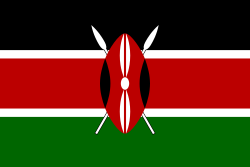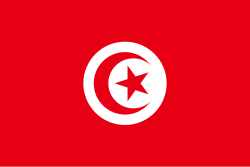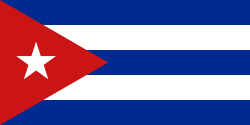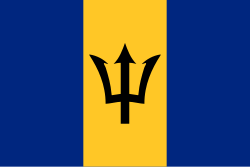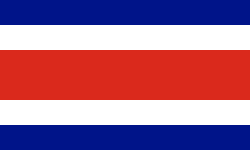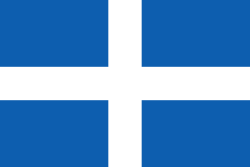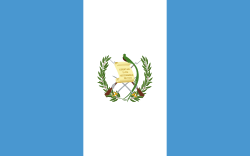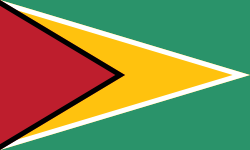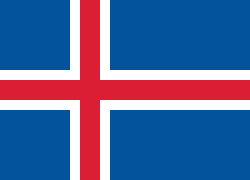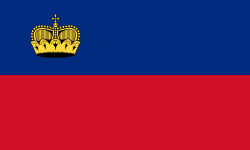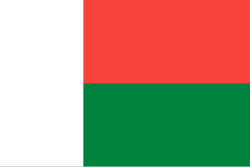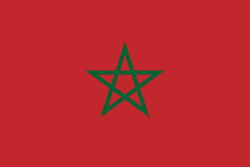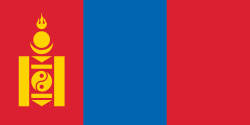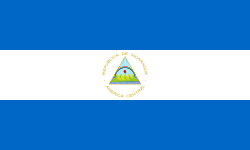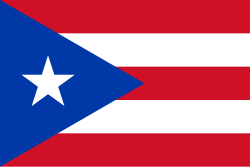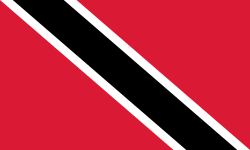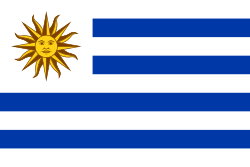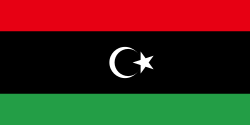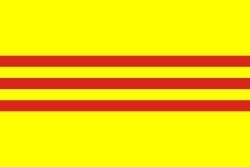Friidrott vid olympiska sommarspelen 1968
| Friidrott vid olympiska sommarspelen 1968 | |
 | |
| Anläggning | Estadio Olímpico Universitario, Mexico City, |
|---|---|
| Datum | 13-20 oktober 1968 |
Friidrotten vid de olympiska sommarspelen 1968 i Mexico City bestod av 36 grenar, 24 för män och 12 för kvinnor, och hölls mellan 13 och 20 oktober 1968 på Estadio Olímpico Universitario. Antalet deltagare var 1 027 tävlande från 92 länder.
Medaljfördelning
| Medaljfördelning | |||||
|---|---|---|---|---|---|
| Placering | Nation | Totalt | |||
| 1 | 15 | 6 | 7 | 28 | |
| 2 | 3 | 2 | 8 | 13 | |
| 3 | 3 | 4 | 1 | 8 | |
| 4 | 2 | 3 | 1 | 6 | |
| 2 | 3 | 1 | 6 | ||
| 6 | 2 | 2 | 0 | 4 | |
| 7 | 2 | 1 | 4 | 7 | |
| 8 | 1 | 4 | 3 | 8 | |
| 9 | 1 | 2 | 1 | 4 | |
| 10 | 1 | 1 | 0 | 2 | |
| 11 | 1 | 0 | 1 | 2 | |
| 1 | 0 | 1 | 2 | ||
| 1 | 0 | 1 | 2 | ||
| 1 | 0 | 1 | 2 | ||
| 15 | 0 | 2 | 0 | 2 | |
| 16 | 0 | 1 | 1 | 2 | |
| 17 | 0 | 1 | 0 | 1 | |
| 0 | 1 | 0 | 1 | ||
| 0 | 1 | 0 | 1 | ||
| 0 | 1 | 0 | 1 | ||
| 0 | 1 | 0 | 1 | ||
| 22 | 0 | 0 | 2 | 2 | |
| 23 | 0 | 0 | 1 | 1 | |
| 0 | 0 | 1 | 1 | ||
| 0 | 0 | 1 | 1 | ||
Medaljörer
Herrar
Damer
Deltagande nationer
Totalt deltog 1 027 friidrottare från 92 länder vid de olympiska spelen 1968 i Mexico City.
Källor
- ”Athletics at the 1968 Ciudad de México Summer Games”. Sports Reference. Arkiverad från originalet den 27 augusti 2012. https://web.archive.org/web/20120827101245/http://www.sports-reference.com/olympics/summer/1968/ATH/. Läst 28 september 2011.
- Den här artikeln är helt eller delvis baserad på material från engelskspråkiga Wikipedia, tidigare version.
Externa länkar
 Wikimedia Commons har media som rör friidrott vid olympiska sommarspelen 1968.
Wikimedia Commons har media som rör friidrott vid olympiska sommarspelen 1968.
| ||||||||||||||
| |||||||||||
Media som används på denna webbplats
Pictograms of Olympic sports – . This is an unofficial sample picture. Images of official Olympic pictograms for 1948 Summer Olympics and all Summer Olympics since 1964 can be found in corresponding Official Reports.
Olympic Rings without "rims" (gaps between the rings), As used, eg. in the logos of the 2008 and 2016 Olympics. The colour scheme applied here was specified in 2023 guidelines.
Olympic Rings without "rims" (gaps between the rings), As used, eg. in the logos of the 2008 and 2016 Olympics. The colour scheme applied here was specified in 2023 guidelines.
Författare/Upphovsman: B1mbo, Licens: CC BY-SA 2.5
Drawing of a gold medal, based on Olympic rings.svg.
Författare/Upphovsman: B1mbo, Licens: CC BY-SA 2.5
Draw of a silver medal, based in Olympic rings.svg.
- The joining of the rings is not correct drawn.
Författare/Upphovsman: B1mbo, Licens: CC BY-SA 2.5
Drawing of a bronze medal, based on Olympic rings.svg.
Flag of the unified Team of Germany for the Olympic Games, 1960–1968.
Flag of the unified Team of Germany for the Olympic Games, 1960–1968.
Flag of Romania, (21 August 1965 - 22 December 1989/officialy 27 December 1989).

Construction sheet of the Flag of Romania as depicted in Decree nr. 972 from 5 November 1968.
- l = 2/3 × L
- C = 1/3 × L
- S = 2/5 × l
Flag of Romania, (21 August 1965 - 22 December 1989/officialy 27 December 1989).

Construction sheet of the Flag of Romania as depicted in Decree nr. 972 from 5 November 1968.
- l = 2/3 × L
- C = 1/3 × L
- S = 2/5 × l
The flag of Brazil from 1968 to 1992 with 23 stars.
Flag of Jamaica. “The sunshine, the land is green, and the people are strong and bold” is the symbolism of the colours of the flag. GOLD represents the natural wealth and beauty of sunlight; GREEN represents hope and agricultural resources; BLACK represents the strength and creativity of the people. The original symbolism, however, was "Hardships there are, but the land is green, and the sun shineth", where BLACK represented the hardships being faced.
The civil ensign and flag of Belgium. It is identical to Image:Flag of Belgium.svg except that it has a 2:3 ratio, instead of 13:15.
1910 Flag of Bermuda (with smaller coat of arms)
Det är enkelt att lägga till en ram runt den här bilden
Den Dominikanska republikens flagga består av ett vitt centrerat kors som sträcker sig hela vägen ut till flaggans kant. I mitten på korset sitter ett emblem med en bibel, ett gyllene kors och sex dominikanska flaggor. Emblemet är omgivet av olivkvistar och palmblad. Under emblemet står ”Republica Dominicana” och ovanför ett band med landets mottot ”Dios, Patria, Libertad” (”Gud, Landet, Frihet”).
Flag of the Ivory Coast, written by Jon Harald Søby, modified by Zscout370. The colors match to what is reported at http://fotw.vexillum.com/flags/ci.html.
Flagga Grekland (1822-1969) och (1974-1978), Årsdag flagga Grekland (1978 - )
Flag of Israel. Shows a Magen David (“Shield of David”) between two stripes. The Shield of David is a traditional Jewish symbol. The stripes symbolize a Jewish prayer shawl (tallit).
Flag of the Socialist Federal Republic of Yugoslavia (1946-1992).
The design (blazon) is defined in Article 4 of the Constitution for the Republic of Yugoslavia (1946). [1]
Flag of the Socialist Federal Republic of Yugoslavia (1946-1992).
The design (blazon) is defined in Article 4 of the Constitution for the Republic of Yugoslavia (1946). [1]
Flag of Liechtenstein
Författare/Upphovsman: Gutten på Hemsen, Licens: CC0
Flag of Norway with colors from the previous version on Commons. This file is used to discuss the colors of the Norwegian flag.
State Flag of Peru.
Flag of Portugal, created by Columbano Bordalo Pinheiro (1857–1929), officially adopted by Portuguese government in June 30th 1911 (in use since about November 1910). Color shades matching the RGB values officially reccomended here. (PMS values should be used for direct ink or textile; CMYK for 4-color offset printing on paper; this is an image for screen display, RGB should be used.)
Flag of Senegal
Författare/Upphovsman: SanchoPanzaXXI, Licens: CC BY-SA 4.0
Flag of Spain during the Spanish State. It was adopted on 11 October 1945 with Reglamento de Banderas Insignias y Distintivos (Flags, Ensigns and Coats of Arms Bill)
Trinidad och Tobagos flagga
Government Ensign of Hungary, flown by state-owned, non-military vessels from 1957 to 1990.
Flag of the Republic of Venezuela (1930-2006)
Flag of Zambia before 1996
Flag of Tunisia until 1999.
The flag of the Ethiopian Empire with the Lion of Judah in the center
Författare/Upphovsman: Heraldry, Licens: CC BY-SA 3.0
Flag of British Honduras
Författare/Upphovsman: Scroch, Licens: CC BY-SA 3.0
Flag of Bulgaria (1968-1971). Flag of Bulgaria with Bulgarian coat from 1968
Flag of Suriname, constituent country of the Kingdom of the Netherlands (1954-1974), from its adoption in 1959 until the achievement of independence on 25 November 1975, on which date the flag was changed to its current form.
Författare/Upphovsman: Simitukidia and Lokal Profil, Licens: CC BY-SA 3.0
Flag of Fiji from 1924 to 1970
Flag of the Philippines (1919–1936)
Författare/Upphovsman: Tcfc2349, Licens: CC BY-SA 4.0
Flag of the Bahamas (1964-1973)
Flag of Cameroon, 1961-75
Flag of the Republic of Venezuela (1930-2006)








